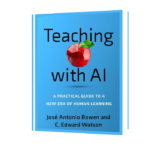Die with Zero: Getting All You Can from Your Money and Your Life

Ratings
“Die with Zero: Getting All You Can from Your Money and Your Life” is a personal finance book written by Bill Perkins. The central theme of the book challenges conventional retirement planning and encourages readers to rethink the way they approach their finances and life goals. The author argues that instead of saving all your money for the end of your life, you should strategically spend it over the course of your lifetime to maximize enjoyment and fulfillment. Below is a summary of the key concepts presented in the book:
Rethinking Retirement:
The book challenges the traditional concept of retirement, where individuals save money throughout their working lives to enjoy during their retirement years. Perkins argues that by deferring all enjoyment until retirement, people may miss out on opportunities to experience life to the fullest when they are younger and healthier.
The Three Stages of Life:
Perkins divides life into three stages: the Go-Go years, the Slow-Go years, and the No-Go years. The Go-Go years represent the active and adventurous phase of life, typically from the late teens to the early 60s. The Slow-Go years involve a gradual reduction in physical and mental capabilities, typically from the early 60s to the late 70s. The No-Go years are the period when individuals may face health issues that limit their ability to enjoy life fully.
The Money Bucket List:
Perkins introduces the concept of the “Money Bucket List,” which is a list of experiences and goals that individuals want to achieve during their lifetime. Instead of focusing solely on accumulating wealth, people should prioritize these experiences and allocate their financial resources accordingly.
The 4 Percent Rule:
The author challenges the commonly accepted 4 percent rule in retirement planning, which suggests withdrawing 4 percent of one’s retirement savings annually to ensure that the money lasts throughout retirement. Perkins argues that adhering strictly to this rule may result in unnecessary sacrifices during the Go-Go years.
Spending Money Wisely:
Perkins emphasizes the importance of spending money on experiences and moments that bring joy and fulfillment. He encourages readers to evaluate their spending decisions based on the happiness and satisfaction derived from those choices rather than purely on financial considerations.
The Power of Time:
The book emphasizes the significance of time in enjoying life experiences. Perkins suggests that certain experiences are best enjoyed when individuals are younger and more active. Waiting until retirement to pursue these experiences may diminish the enjoyment and limit physical capabilities.
The Legacy Dilemma:
Perkins discusses the idea that leaving a financial legacy for heirs may not always be the best choice. He argues that providing financial assistance to family members when they need it the most, such as for education, a first home, or starting a business, can be more meaningful than leaving a large inheritance.
Implementing the Die with Zero Strategy:
The author provides practical tips for implementing the Die with Zero strategy. This includes identifying and prioritizing experiences on the Money Bucket List, allocating resources to maximize enjoyment during the Go-Go years, and being conscious of the limited time available to enjoy certain activities.
Financial Planning for Fulfillment:
The book promotes a more holistic approach to financial planning that considers not only the amount of money saved but also the quality of life experienced. Perkins encourages readers to strike a balance between saving for the future and enjoying the present.
Conclusion:
“Die with Zero” challenges traditional notions of retirement planning and encourages readers to prioritize experiences and fulfillment over strict financial accumulation. By adopting the Money Bucket List and reevaluating spending decisions, individuals can make the most of their money and time throughout their lives. The book serves as a guide for those who want to live a more intentional and satisfying life, balancing financial responsibility with the pursuit of meaningful experiences.







